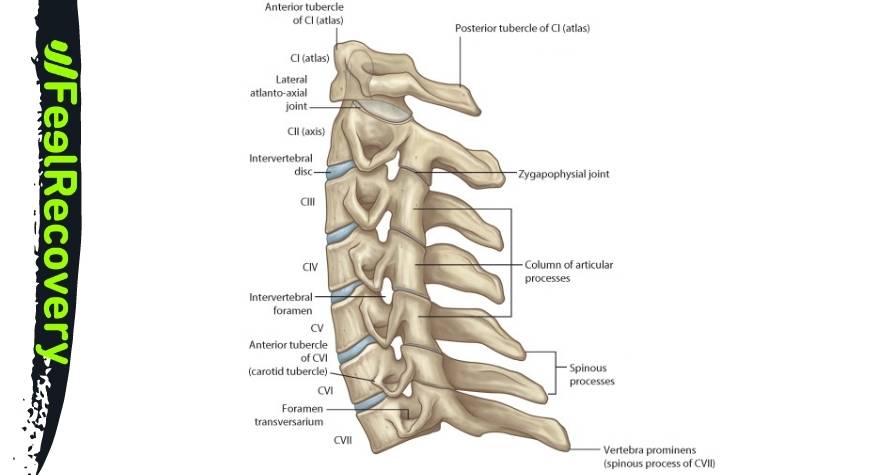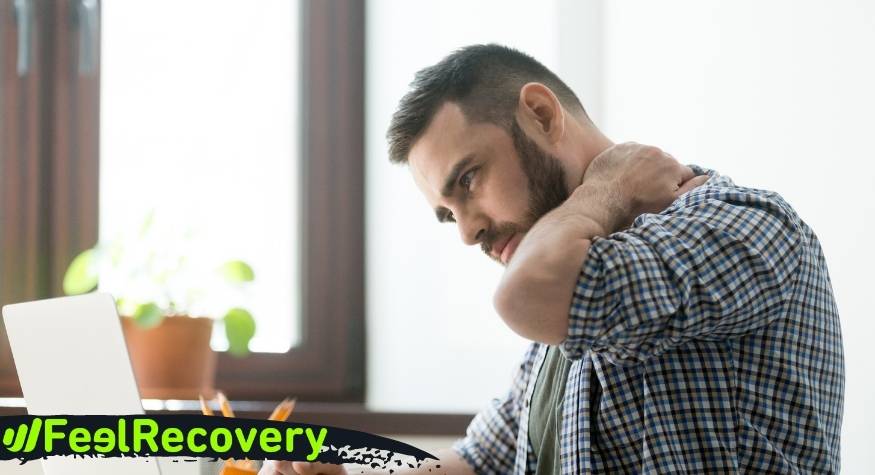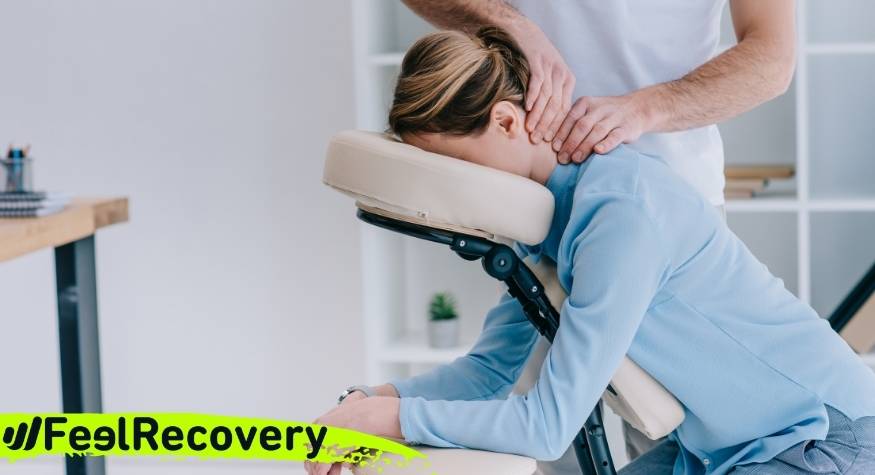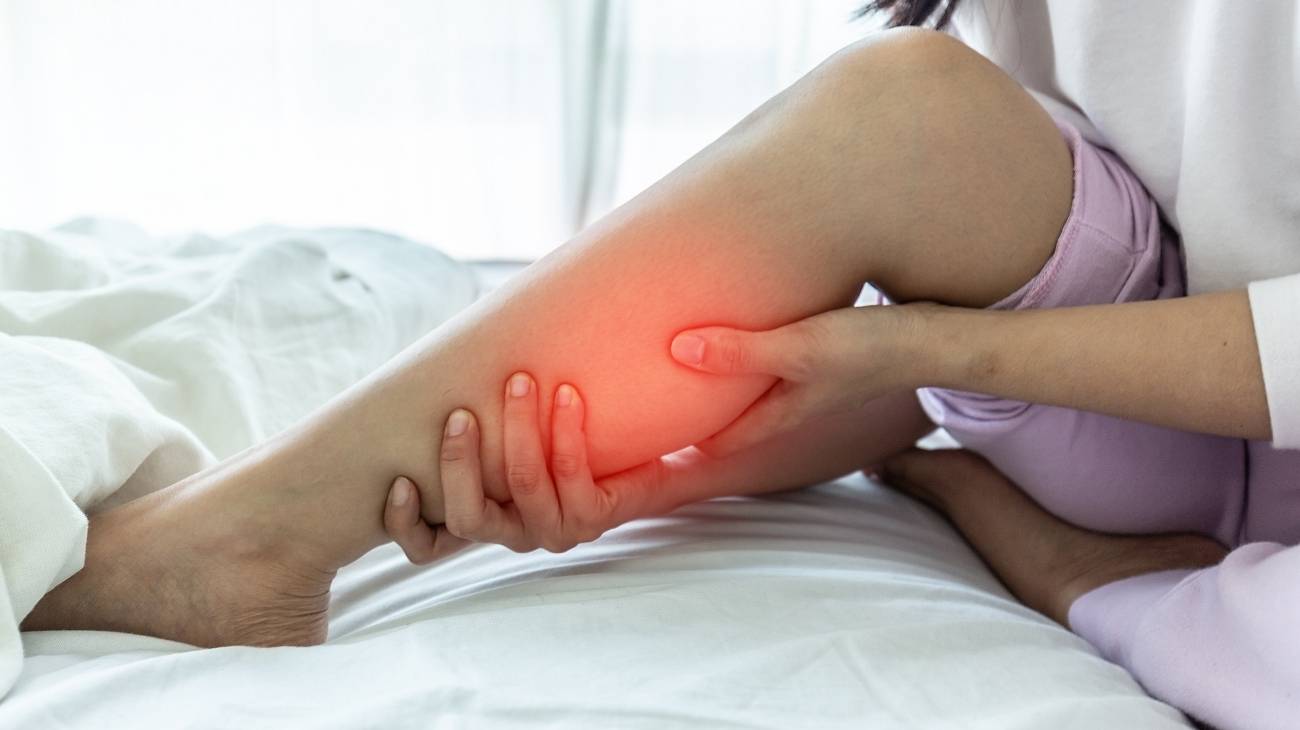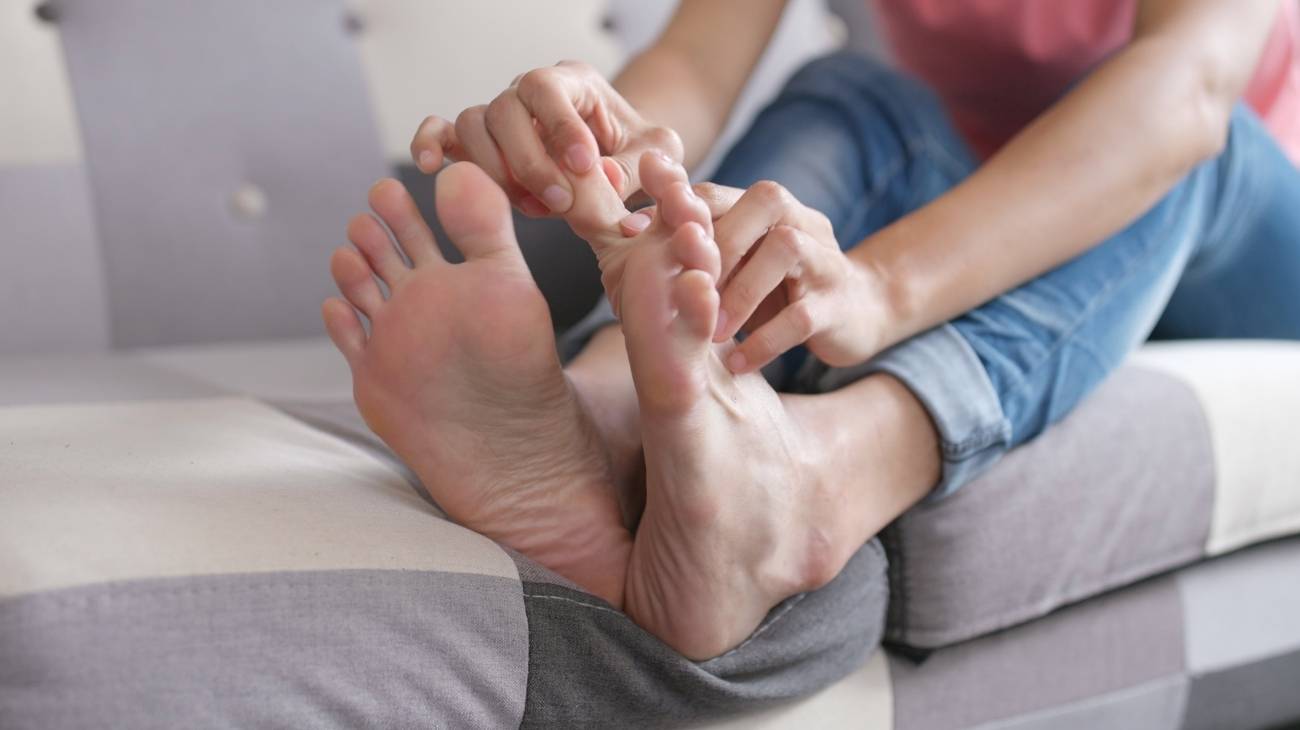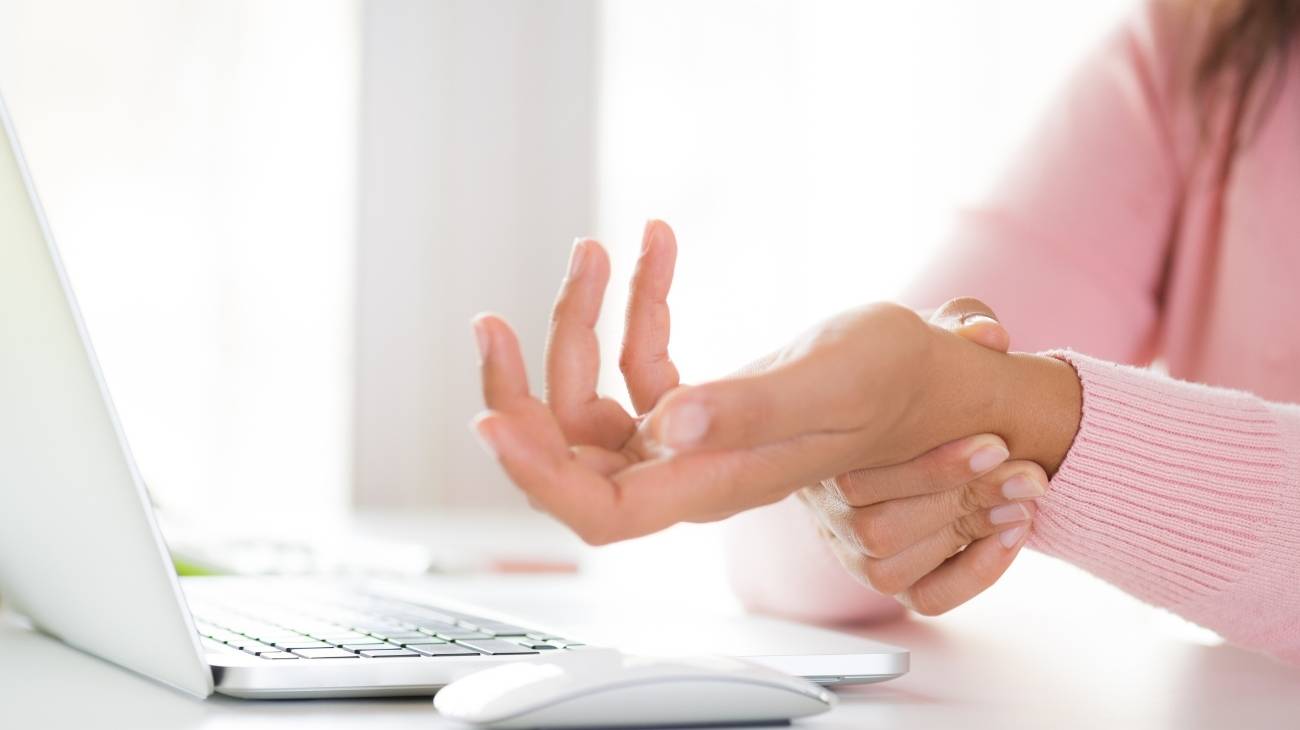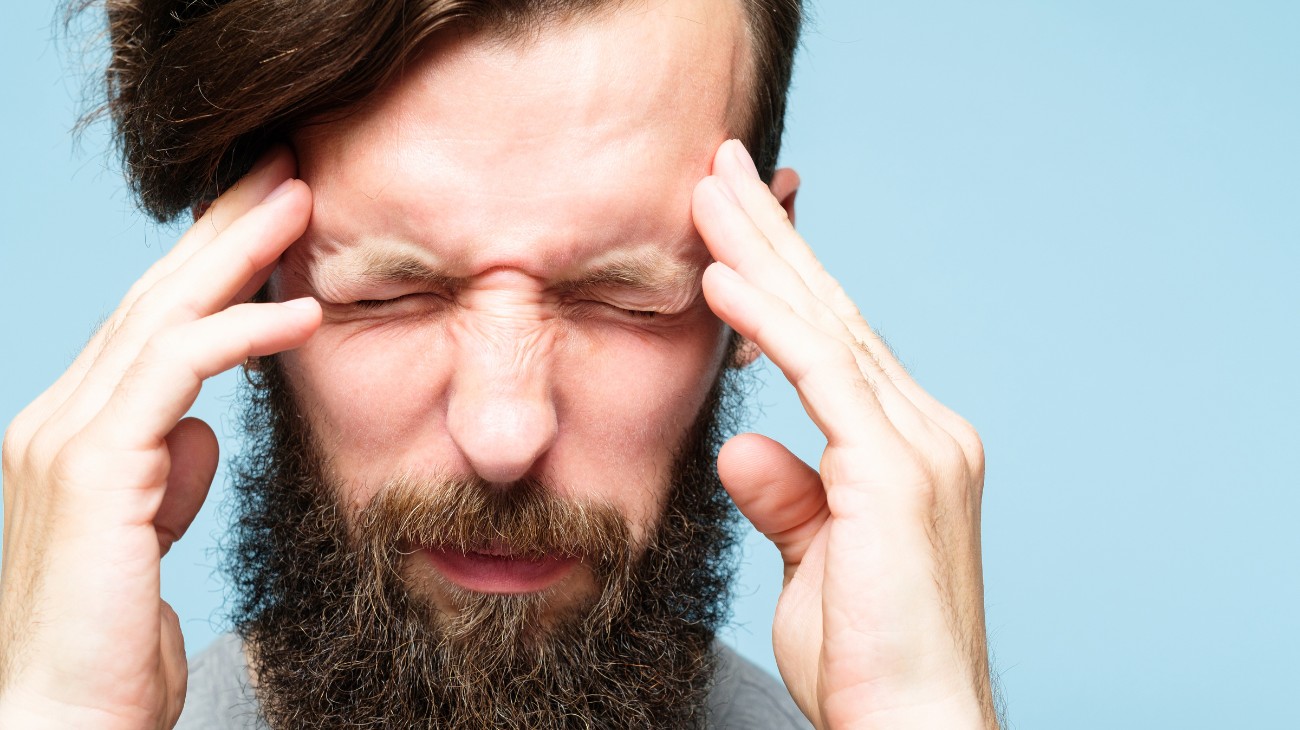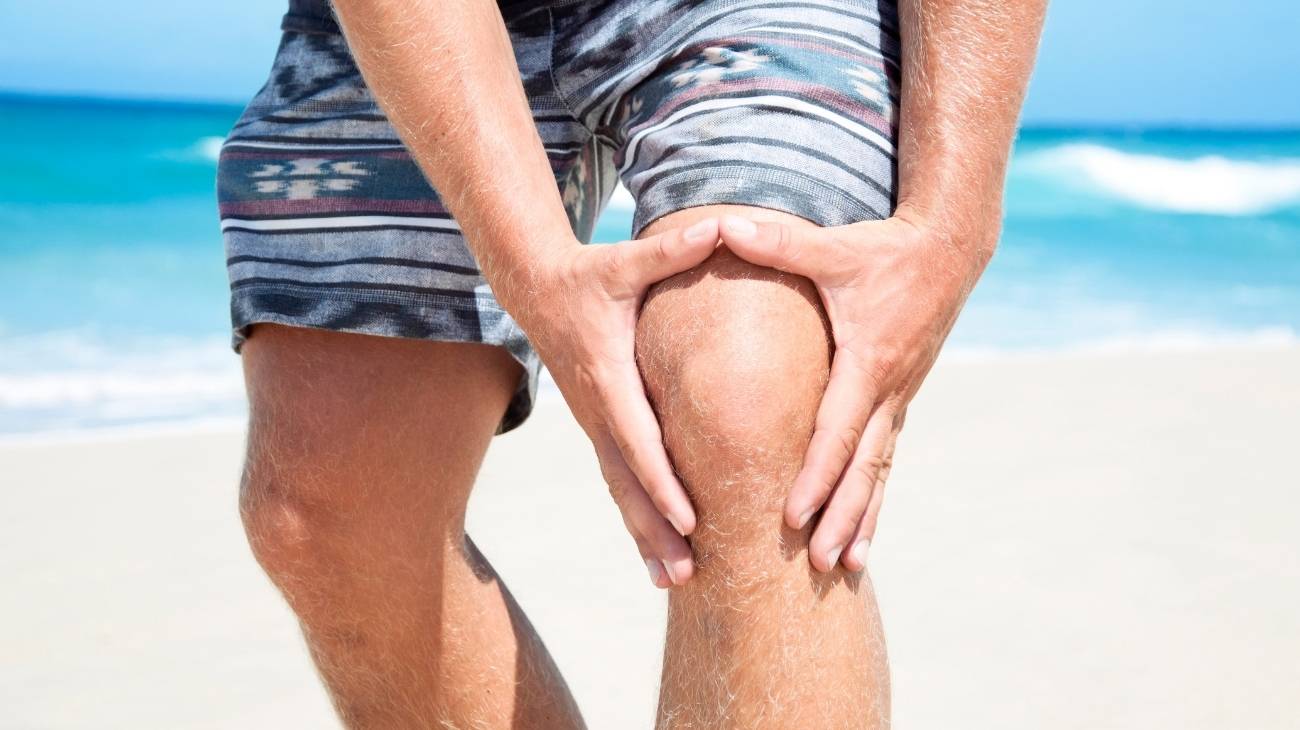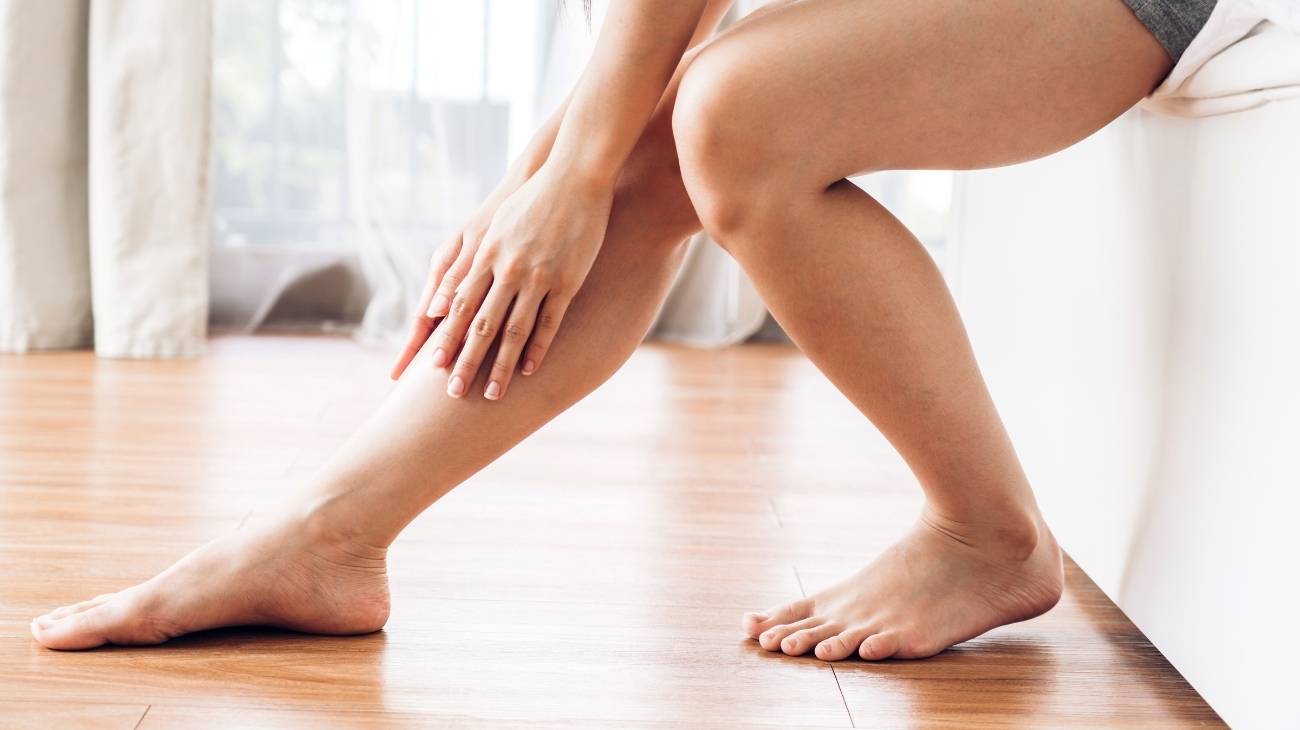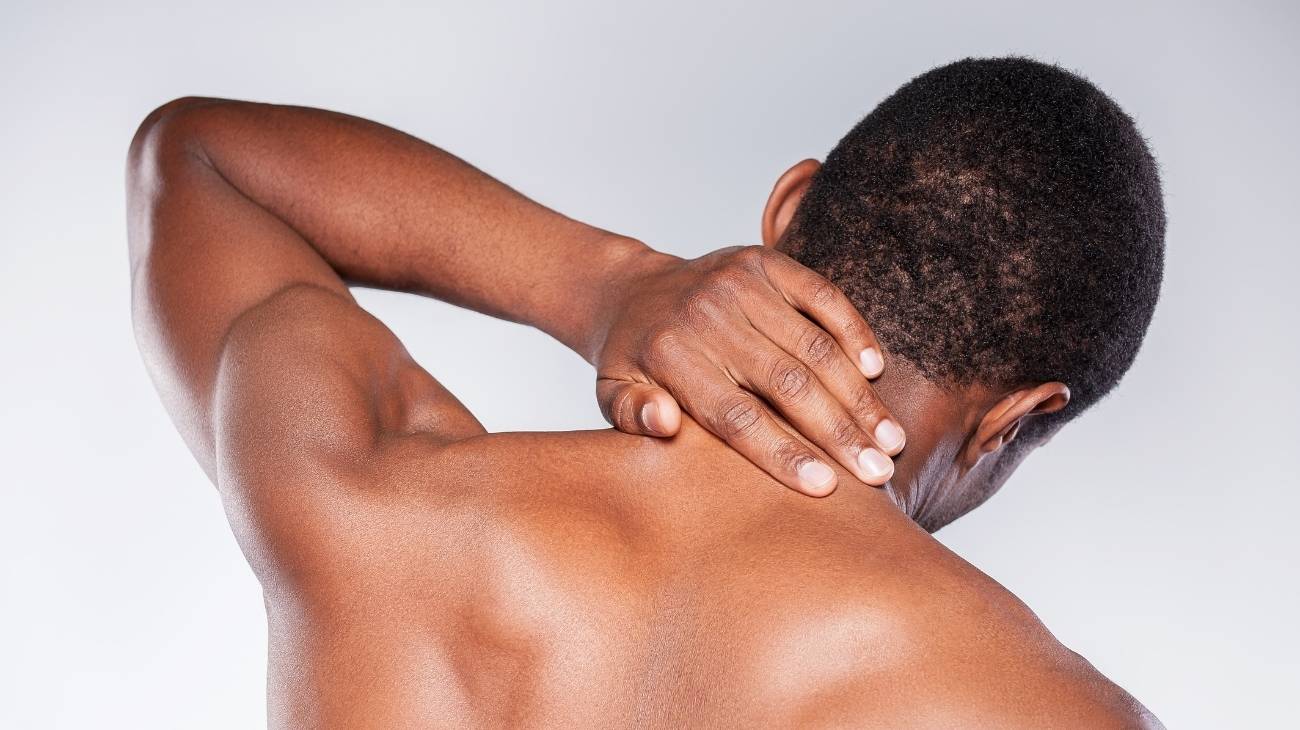- What is cervicalgia or neck pain and what types are there?
- Best products for neck pain relief
- Types and classification of the most common cervicalgias
- What causes cervicalgia and what are the causes of pain in the neck and nape?
- What are the symptoms and types of pain that make us think we have neck pain?
- How can we relieve neck pain through complementary and non-invasive therapies?
- How to apply the RICE therapy step by step to reduce neck pain?
- How to prevent future episodes of cervicalgia and neck pain?
- Why should we avoid pills and injections to relieve neck pain?
When there is damage to the neck area, it is common that we cannot perform certain actions and movements and even that our mood changes. Therefore, relief of neck pain is absolutely necessary to enjoy a good quality of life.
In this article we will describe what neck pain is, why it hurts the neck both in normal situations and when there are injuries or diseases, how to deflate the cervical muscles naturally and make the pain go away and, of course, we will help you not to suffer from this problem again with the best prevention tips for neck pain.
What is cervicalgia or neck pain and what types are there?
A cervical pain is a pain that occurs in the neck both in the posterior area and on both sides. They are caused by muscular, tendon, bone or ligament pathologies and even nerve pathologies. In many occasions, a small problem does not cause serious damage but in combination with other specific circumstances it can give rise to a cervical pain problem in the neck.
In turn, cervicalgia is very annoying because it is a pathology that continues to maintain muscle overload. This implies that the problem is difficult to solve and in many cases it even worsens. Sometimes it can contract the back, put pressure on the vertebrae and compress the discs, all of which favors the appearance of osteoarthritis.
Best products for neck pain relief
Bestseller
-
Microwave Heating Pad for Neck & Shoulder Pain Relief (Hearts)
$29.95 -
Microwave Heating Pad for Neck & Shoulder Pain Relief (Oxford)
$29.95 -
Microwave Heating Pad for Neck & Shoulder Pain Relief (Sport)
$29.95 -
Microwave Heating Pad for Neck Pain Relief (Hearts)
$24.95 -
Microwave Heating Pad for Neck Pain Relief (Oxford)
$24.95 -
Microwave Heating Pad for Neck Pain Relief (Sport)
$24.95 -
Microwaveable Heating Pad for Pain Relief (Hearts)
$24.95 -
Microwaveable Heating Pad for Pain Relief (Oxford)
$24.95
Types and classification of the most common cervicalgias
In terms of variety, we can make classifications considering different factors. The types of cervicalgia that exist are:
- Acute cervicalgia: These are pains that appear suddenly and we are usually very aware of the reason (a blow, staying in bad posture), although it does not have to. Although it is not mandatory, it is common that, in this case, the area and surroundings are also inflamed.
- Chronic cervicalgia: Neck pain is dilated over time and appears for no apparent reason. It is considerably milder than acute cervical pain, but its recovery is also longer and may never fully occur.
- Traumatic cervicalgia: There is a trauma to a tissue. It may be from a direct blow, from a rapid and very sudden movement, or from forceful injury to the tissues.
- Psychosomatic cervical pain: It is caused by psychological and emotional factors such as stress, anxiety, negative emotions caused by problems of any kind.
- Postural, functional or myofascial cervicalgia: It involves axial pain with trigger points on both sides of the neck and diffuse or wide focus pain. It is uncommon but may refer to heaviness and even stiffness.
- Discogenic or osteoarticular cervicalgia: It appears due to low energy trauma and overexertion. The similarity of symptoms between the different affected areas can make it difficult to make a precise diagnosis of the affected part. Both joint and disc lesions produce axial pain with contracture.
- Radicular or myelopathic cervicobrachialgia: Characteristic because the symptoms of these cases are quite particular (tingling, numbness, atrophy, weakness, spasticity, difficulty in walking, etc.). In addition, cervicalgia has occurred before in most cases.
- Whiplash: This is a special type of cervical pain differentiated by the way it occurs. It occurs because inertia applies force to the head, which makes a specific back-and-forth motion. It is very painful and requires medical attention to avoid sequels, very common in traffic accidents.
What causes cervicalgia and what are the causes of pain in the neck and nape?
Both the neck and the nape and also nearby areas can hurt for a variety of reasons. Generally, overexertion and tension are what cause the rest of the situations, which, as you will see, are very varied.
Muscle tension
When you keep your muscles under tension, they become overloaded. Muscle tensions are often caused by situations as simple as reading in bed, spending several hours doing office work, using a smartphone or even keeping your teeth clenched (bruxism).
Nerve impingement
Nerves can be damaged (usually temporarily, by impingement) in circumstances such as when vertebral osteophytes develop or if we suffer from disc herniation. The nerves that originate in the spinal cord are pressured and do not receive and emit the proper messages. The pain is sharp and focused and may come and go or only occur in a specific posture, when the nerve impingement is enhanced.
Bad posture
Poor posture forces both hard and soft tissues into an unnatural posture. Generally, what happens is overextension, that is, one or more of the tissues work beyond their capabilities for too long. You will notice pain when trying to move the head, which disappears by keeping it in a certain posture, and tension that turns into stiffness. To the touch, you may notice that a tissue protrudes and is hard along its entire length.
Whiplash
It is the action of exaggerated backward and forward movement that stretches the soft tissues. It is caused by the occurrence of a violent and abrupt movement. It can be quite serious, creating herniated discs or producing a chronic pathology. Its diagnosis is easy because, in addition to significant pain, it includes displacement of tissues, nausea, dizziness and blurred vision. Sometimes there will also be sleep disorders, hearing disorders and problems in concentrating and memorizing simple data.
Muscle spasms
The spasms that we feel in certain tissues of the upper back expand upwards and reach the neck. Its tissues are affected, causing the muscles to tighten and even stiffen for a period of time. Tendon reflexes are also common.
Joint wear and tear (osteoarthritis)
Over time, the joints gradually wear down, or more rapidly if this occurs due to other circumstances. The cartilage that covers the vertebrae and protects them disappears, leaving them exposed. With friction, they deteriorate to the point of forming spurs or osteophytes, which modify the articulatory action as well as producing a lot of pain.
Cervical spondylosis
This is the wear and tear of the discs between the vertebrae. The situation is very similar to that of joint wear. What happens to the discs is that they become dehydrated and thus shrink, also giving rise to osteoarthritis and the appearance of protuberances on the edge of each ossicle.
It is often an asymptomatic problem, but if symptoms occur (usually because of nerve or spinal cord compression), they include tingling, weakness, numbness, incoordination or lack of bladder and bowel control.
Trauma
Trauma to the neck area or even a blow that causes us to move abruptly will be enough to cause the tissues to act more quickly than they are capable of. It is also possible for tendons, muscles and even bones to be injured by the direct impact, resulting in cracks, tears or breaks. Trauma can cause all kinds of symptoms, from mild pain to bone fractures, dizziness, headache and eye pain, incoordination, muscle stiffness, etc.
Cervical or spinal stenosis
It is the constriction or narrowing of the spinal canal, that is to say, of the tube where the spinal column is located. This causes the spinal cord to be under constant pressure. Sometimes, even the intervertebral holes through which the spinal nerves should exit are narrowed. Certainly, it is a pathology that can be due to multiple causes.
The most common causes are dehydration of the spinal discs and thickening or growth of bones and vertebral ligaments. But many other causes are spinal defects, disc herniation, presence of tumors, spinal arthritis, fractures, vertebral lesions, different bone diseases, etc. If you suffer from cervical stenosis you will notice weakness in arms or legs, cramps, numbness, back pain, buttock, calf, shoulder, arm and, of course, in the neck itself.
Ruptured annulus fibrosus or disc herniation
It is a partial or total fissure of the annular fibrocartilaginous structure that surrounds the nucleus of the intervertebral discs. Its function is to encapsulate the nucleus and give it stability, so that the cushioning function occurs successfully. Cracking means that the annulus becomes unstructured and the nucleus it protects is deformed. In addition, this is exposed, so it is much easier to suffer a herniated disc or a protrusion. Its prevention or treatment is very important because, otherwise, there are many possibilities of suffering from other painful problems such as low back pain or sciatica.
Fibromyalgia
It is a disease based on chronic pain in different parts of the body, including the neck, appearing without an injury as a cause. This pain is diffuse and reaches the neck, down the back and chest to the extremities.
In addition, a generalized pain is felt that produces fatigue in circumstances such as brief efforts or when there is humidity or cold in the environment, or when waking up or suffering stress. Other symptoms are headache due to muscular tension, lighter sleep, less concentration, a sensation of non-existent inflammation, tingling and numbness of feet and hands, premenstrual and irritable bladder syndromes, etc.
Radiating pain
There are diseases and other pathologies that cause us to feel pain in the neck. A couple of examples would be bruxism or a distension of some of the tissues of the shoulder. Obviously, each of the cases will include both symptoms of neck pain and the pathology itself, being especially important to highlight these to a medical professional so that he/she can diagnose you easily.
What are the symptoms and types of pain that make us think we have neck pain?
In the case of cervical pain, we will notice one or more of the following symptoms and types of pain:
- Progressive pain: The pain usually increases gradually if the cause is a bad posture or the maintenance of this for an excessive time.
- Injurious pain: It is sudden and very painful, caused by sudden movements and other tissue injuries.
- Incisive pain: If you suffer a very focused, sharp and incisive pain, it is possibly due to a nervous problem.
- Muscle tension: Muscles tighten, becoming harder than usual and making bending more uncomfortable and/or painful.
- Muscle stiffness: In this case, the muscles lose their flexibility almost completely, so that flexion is unfeasible, and they become much harder, even showing bulging, visibly swelling.
- Spasms: Although spasms are a cause of cervicalgia, they are also a symptom of cervicalgia. The muscles are poorly positioned and must make a greater overexertion, becoming weak and fragile; any action and, above all, effort, means that these palpitations appear, especially if we do not have a well-developed muscle tone.
- Tingling: It appears due to a nerve injury. The skin is highly sensitized and generally this symptom does not disappear when touching the area.
- Headache and pain in the eyes: There are occasions in which a pain of muscular origin, such as tension in the neck muscles, derives in headache. It is also a common symptom that accompanies cervicalgia when it appears due to stress.
- Dizziness: Closely related to the previous point.
- Blurred vision: It is also related to headache but it is very possible that we also suffer from blurred vision after whiplash. This symptom is of short duration, but if this is not the case, it is essential to seek medical advice.
- Limitation of movement: Both pain and stiffness make it difficult or even impossible for us to make the usual neck movements, whether lateral movements, turns, inclinations, etc.
- Referred pain: Pain appears in other areas of the body, generally adjacent, such as the neck, ears, back... Sometimes we may even refer pain in more distant parts; this occurs when the problem is nervous and the pain will travel along the nerves.
How can we relieve neck pain through complementary and non-invasive therapies?
If you are looking for neck pain relief as naturally as possible, it is important that you are aware of the different non-invasive therapies that exist. These, despite being complementary and/or alternatives to traditional medicine, offer very good results without the need for painkillers, painkillers and other medications.
Massage therapy
Massage is possibly the most effective therapy to relieve cervicalgia pain, while treating it if its cause is related to muscle tissues, which is the most common. Different types of massages are suitable starting with a relaxing massage session to deep tissue kneading to eliminate accumulated tension, through the Cyriax massage, which works the tissues transversely, the reflex massage for nerve damage pain, torticollis, sprains etc..
It is very important, especially if you have been immobile for long periods of time, to receive a manual lymphatic drainage, because the contractures prevent the normal flow of lymph and blood, and if we have not worked them, the level of toxins in the area will be very high, multiplying the pain and even making us run the risk of infection.
Acupressure therapy
For cervical pain as well as for spasms, contractures, whiplash and other problems that occur in our neck, nape and upper back, there are four essential meridian points that we should press. They are located in the back area of the leg, right in the central area and vertically, from bottom to top.
The most common acupressure points to treat neck injuries are:
- Zhen Jin 77.01
- Zheng Zhong 77.02
- Zheng Shi 77.03
- Bo Qiu 77.04
Thermotherapy
When you notice a mild neck pain caused simply by a long day of work, because you have chronic damage or caused by another pathology you can put heat. It is important to know that if you want to try thermotherapy that your neck is not inflamed. As a positive point, know that you can enjoy this natural therapy as many times as you want as long as the temperature is not excessive and in sessions of 20-25 minutes each time.
Cryotherapy
In case of acute pain, very intense with or without inflammation and during the first days after the injury, the best thing to do is to apply some cold. There are specific products of low temperature that are perfectly graduated to fulfill their function without causing us damage. These products are placed on the back of the neck, shoulders and nearby areas and held for about 15-20 minutes, you can apply cold therapy 3-4 times a day. The cold acts as an analgesic and helps swelling to reduce as less blood reaches the neck.
Other effective alternative therapies
- Natural remedies using plants: For neck pain relief, plants can be very beneficial, especially if it is emotional and stress is causing or aggravating it. You simply have to make steam breaths of analgesic and relaxing plants. Choose valerian, lavender, kava, lemon verbena, chamomile, passionflower, lemon balm, valerian, rosemary....
- Aromatherapy: Power vapors with intense aromas to stimulate mucous membranes and nerve points that transmit information related to both pain and the placement of tissues.
- Acupuncture: It serves both to treat the pain itself and to reduce stress, which we have already seen that directly attacks the cervical. You must go to an expert who will place needles in strategic points that, when stimulated, work on the causes of damage to your neck and reduce both the general pain and the area. The points are the same as those we have seen in acupressure.
- Kinesiotherapy: In the case of cervicalgia, kinesic practice is highly recommended, highlighting the myotensive techniques. The aim is to improve the resistance of the deep stabilization musculature, strength coordination and motor control.
- Osteopathy: After evaluating the cause of cervical damage, non-impulse and soft tissue techniques will be used. We do this in the first instance due to the fragility of the area. The objective is to find the postural balance from increased mobility, painlessly, where the tissues are restricted in terms of their function. First and foremost is to place the cervical vertebrae in their correct position.
- Electrotherapy: It would serve to regulate a muscle tone that has been altered on the basis of improved circulation, which accounts for most neck pain. The relaxation of the tissue also implies a reduction of pain.
How to apply the RICE therapy step by step to reduce neck pain?
For neck pain that is sudden or acute, you can use the PRICE therapy, the enhanced version of the well-known RICE first aid protocol. The steps are very simple and are as follows:
- Protection: Start by preventing future damage to the affected area. Any action aimed at this is appropriate, for example, do not move the neck in a compromising situation, stop doing the activity you were doing when the pain arose, etc..
- Rest: If the pain persists, you probably have an injury, however small it may be. To recover and, of course, to prevent it from getting worse, it is best to avoid any unnecessary movement of the neck. Try to rest, although avoiding absolute rest but taking more and longer breaks and, in addition, avoiding any activity that makes you move the area unnecessarily.
- Ice: To reduce pain the trick is to get cold. Cryotherapy works perfectly. Just place a cold application product such as compresses or, if you are looking for something more professional, low-temperature thermal bags on the part of the neck that hurts.
- Compression: Unless you have suffered a huge trauma, compression in this case will not be necessary. You should simply make sure you wear comfortable clothes that do not dig in, if possible made of natural or synthetic fabrics but totally adaptable to the body. The use of a neck brace would be recommended in certain cases.
- Elevation: Finally, try to remain slightly incorporated when you lie down, so that the cervical area is above the height of the heart. It is very important that the support is firm so that the natural shape of the bone structure is maintained. In this way, you will get less blood to the neck and its inflammation will subside.
Remember that this basic therapy is not suitable for chronic pain but for cases where it comes on suddenly, such as whiplash or after a blow that includes swelling. If the acute phase of your pain has subsided, you should choose to apply heat.
How to prevent future episodes of cervicalgia and neck pain?
Preventing neck pain is really easy if we can change our habits. Here are some examples of how to prevent neck pain:
- Postural hygiene: First and foremost is to maintain good posture in our daily lives. Your spine should maintain its natural shape when you sit down. To do this, you must bring your buttocks close to the back of your seat. Your thighs should be parallel to the floor and your knee should make a 90 degree bend, your arms should also be parallel to the floor.
- Neck exercises: Consult an expert to show you specific exercises to maintain good health in your neck. This way you will be able to evaluate if you have previous damage, if you are prone to pain in specific areas, know your daily routine and other aspects in order to recommend the most appropriate exercises.
- Relaxation techniques: Stress mainly affects the neck and back. Therefore, you should avoid it as much as possible. But as this is not always the case, it is best to try to combat it with relaxation techniques. Try meditation or Tai Chi, they are really effective and help you not only to avoid neck pain but also to forget about your problems, see things from another point of view, etc. which means that your stress will decrease not only at the time of practice but also in the short and medium term.
- Massage: Massage is also a very good way to relax, but we wanted to consider it separately for its physical benefits. Obviously, massaging your neck, back, shoulders and head will help both in relieving neck pain and preventing it. Good maintenance of the muscle tissues will make them less prone to tension and contractures.
- Breaks: When you have to maintain unnatural postures, take breaks. It is best that the breaks are short and frequent so that you never overexert yourself. You can get up to get a glass of water, stretch in your chair and do some relaxation exercises, take deep breaths.
- Thermotherapy: Vasodilation means that your neck is stretched, so you fight against stress or strain problems. In addition, the heat will also help you relax. Use it as much as you can but we especially recommend it if you have an office job and when returning home after your workday.
Why should we avoid pills and injections to relieve neck pain?
Pain relievers are not going to cure you. They work as an analgesic, which is what they are, but the pain will return after a while if you haven't treated the problem that is causing it. Save taking drugs precisely for that treatment because, although in many cases you do not need anything, in others you will have to take medication.
Self-medication is a very bad decision that, although sometimes it works, at other times it can be detrimental. Medications do not work the same for everyone. In fact, they can act differently in the same person depending on his or her circumstances.
In case you need medication, see your doctor, he will know what to do about it, giving you some advice, changing your treatment or telling you to repeat the therapies that we have previously recommended. If necessary, he will prescribe you the painkillers that can best act according to your neck pain.
References
- Kohan, E. J., & Wirth, G. A. (2014). Anatomy of the neck. Clinics in plastic surgery, 41(1), 1-6. https://www.plasticsurgery.theclinics.com/article/S0094-1298(13)00103-X/fulltext
- McIntosh, A. S., & McCrory, P. (2005). Preventing head and neck injury. British Journal of Sports Medicine, 39(6), 314-318. https://bjsm.bmj.com/content/39/6/314.short
- Tysvaer, A. T. (1992). Head and neck injuries in soccer. Sports Medicine, 14(3), 200-213. https://link.springer.com/article/10.2165/00007256-199214030-00006
- Mayou, R., & Bryant, B. (1996). Outcome of ‘whiplash’neck injury. Injury, 27(9), 617-623. https://www.sciencedirect.com/science/article/abs/pii/S0020138396001143
- Mayou, R., & Bryant, B. (2002). Psychiatry of whiplash neck injury. The British Journal of Psychiatry, 180(5), 441-448. https://www.cambridge.org/core/journals/the-british-journal-of-psychiatry/article/psychiatry-of-whiplash-neck-injury/0734BAAAF64DF6C3974E47CCD71203F6
- Binder, A. I. (2007). Cervical spondylosis and neck pain. Bmj, 334(7592), 527-531. https://www.bmj.com/content/334/7592/527.short
- Guez, M., Hildingsson, C., Nilsson, M., & Toolanen, G. (2002). The prevalence of neck pain. Acta Orthopaedica Scandinavica, 73(4), 455-459. https://www.tandfonline.com/doi/abs/10.1080/00016470216329
- Ariens, G. A., Van Mechelen, W., Bongers, P. M., Bouter, L. M., & Van Der Wal, G. (2000). Physical risk factors for neck pain. Scandinavian journal of work, environment & health, 7-19. https://www.jstor.org/stable/40967013
- Gore, D. R., Sepic, S. B., Gardner, G. M., & Murray, M. P. (1987). Neck pain: a long-term follow-up of 205 patients. Spine, 12(1), 1-5. https://europepmc.org/article/med/3576350
- Cohen, S. P., & Hooten, W. M. (2017). Advances in the diagnosis and management of neck pain. Bmj, 358. https://www.bmj.com/content/358/bmj.j3221.abstract

